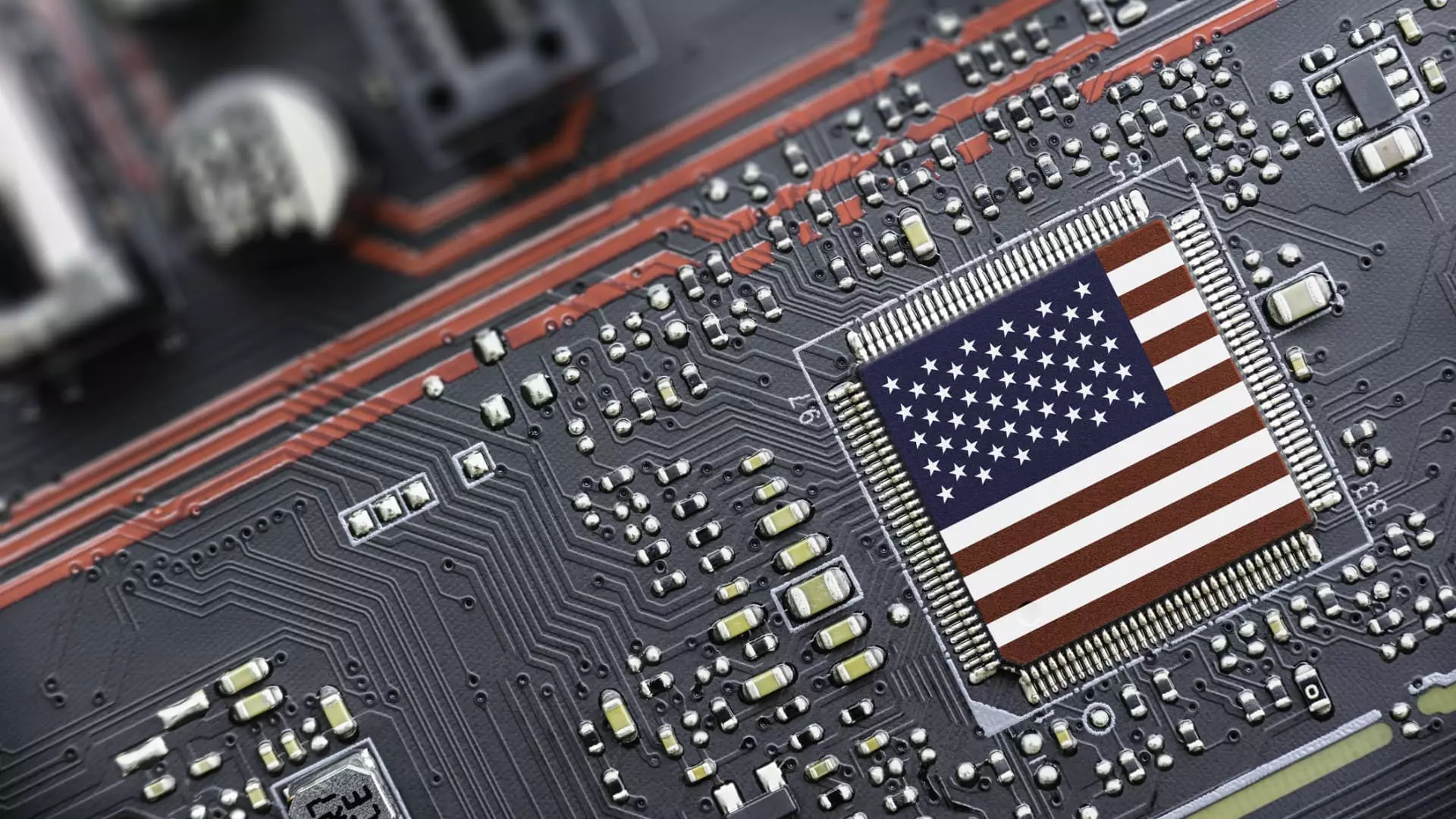The recent turmoil in the semiconductor market has left many investors reeling, and the euphoric optimism surrounding President Trump’s announcement about tariff exclusions for semiconductors has all but evaporated. Initially, it seemed that leading chip manufacturers would be spared from the weighty tariffs, particularly Taiwan’s overwhelming 32%. However, the market’s response tells a different story. The stocks of major players like Nvidia and Micron saw considerable declines, and this reaction illustrates a broader concern that simply cannot be ignored—relief from tariffs does not equate to security for the industry.
Investors are acutely aware that this exemption is more of a temporary reprieve than a permanent fix. Not only are semiconductor-specific tariffs still very much a possibility, they are merely postponed. The market’s pessimism is underscored by analysts’ predictions that these tariffs could eventually hover around 10%. Companies may attempt to navigate the murky waters by creatively routing shipments through lower-tariff countries, but let’s face it: this is a mere Band-Aid on a festering wound. The underlying issues are far more severe and complex.
The Ripple Effect of Existing Tariffs
The ramifications of current tariffs are already causing tremors throughout the entire technology ecosystem. What many fail to realize is that chips rarely enter the U.S. in isolation. They are embedded within consumer electronics, such as laptops and smartphones. According to industry estimates, the U.S. imports approximately $200 billion of computing equipment and another $114 billion in wireless devices that might soon incur extravagant tariffs approaching 40%. This staggering financial burden could lead to a significant plummet in consumer spending, thereby crippling demand for semiconductors across the board.
The harsh reality is that companies, including giants like Nvidia, aren’t just battling external pressures; they also face internal complexities that further complicate their positions. For instance, there is a frenzy among Chinese tech firms, including notable players like Alibaba, who are stockpiling Nvidia’s H20 AI chips ahead of impending restrictions. While on the surface this looks like a short-term boost for Nvidia, it raises significant fears regarding their long-term prospects: an overabundance of inventory could lead to crippling excess capacity if export limits materialize.
The Uncertain Future of AI and Infrastructure
As further storm clouds gather on the horizon, the industry’s outlook becomes even murkier. Reports indicate that major players such as Microsoft are opting to postpone or cancel large-scale data center projects worldwide, from Indonesia to various states in the U.S. This holds alarming implications for the AI sector, which many viewed as the beacon of sustainable profitability and growth. The volatility in the cloud infrastructure market is palpable; stocks like CoreWeave have already taken substantial hits amid this uncertainty.
This wave of hesitance among industry titans raises compelling questions about the reliability of AI as a growth driver moving forward. While it’s true that domestic manufacturers like Intel could, in a broad sense, benefit from the return of production to U.S. soil, the immediate landscape reveals a harsh contradiction. The damage wrought by diminishing demand likely overshadows any potential upside afforded by protectionist policies. What’s the point of bringing production home if the market for those products is rapidly evaporating?
Consumer Psychology in a Downward Spiral
Let’s not underestimate the psychological aspect of this downturn. Consumer sentiment is a pivotal factor that can either lift or destroy entire markets. Amidst fears of a demand collapse, potential buyers might exercise caution—or worse, completely retract from investing in high-cost electronics that typically house these semiconductors. As economic pressures mount, the jeopardized stability within the semiconductor industry could very well translate into broader fiscal anxiety, resulting in a cyclical decline.
Underpinning this is a truth that those poised to make decisions in Washington need to recognize: protectionist measures could be detrimental in the long run. Instead of fostering a healthier, more competitive semiconductor industry, these tariffs might produce exactly the opposite effect—resulting in stunted growth and decreased innovation. In this era of rapid technological advancement, where agility is key, the focus should be on supporting, not strangling, American innovation and production.

